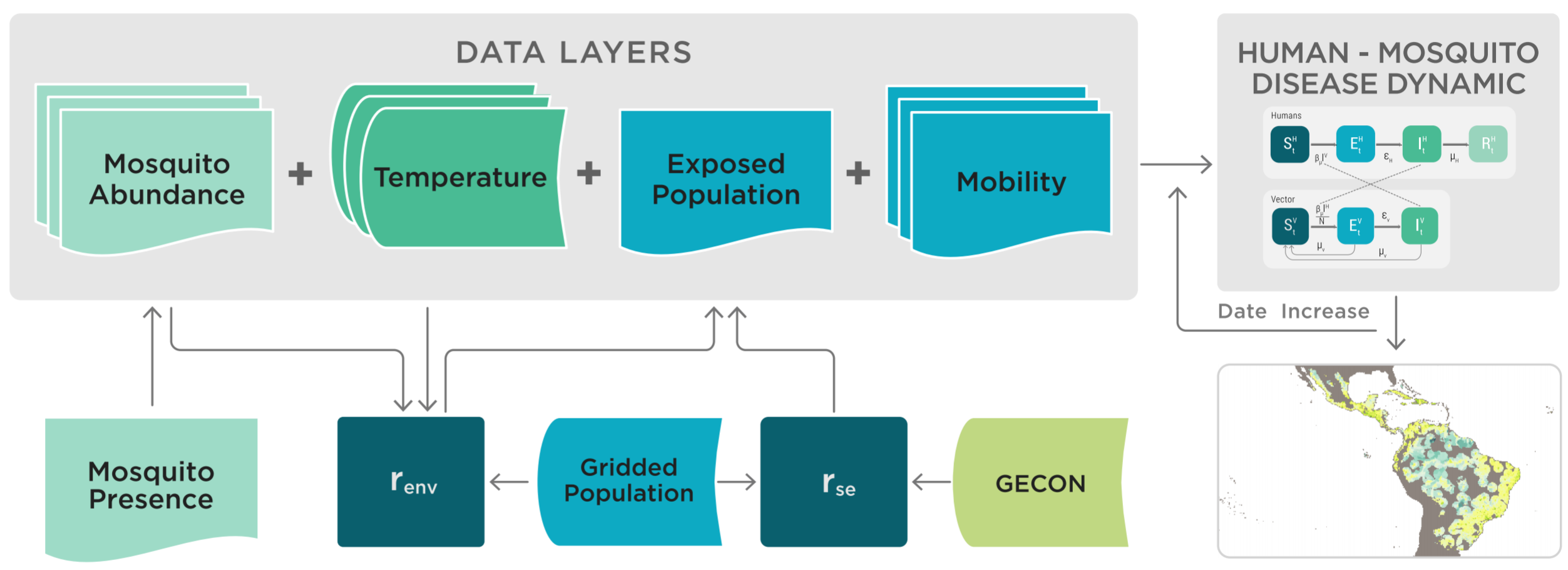Modeling 2015–16 Zika virus epidemic

In mid-May 2015 the Zika Virus (ZIKV) was confirmed responsible for a growing number of cases of an exanthematic disease spreading through a number of Brazilian states. Since that time, transmission of Zika virus has occurred throughout much of the Americas and as of July 14, 2016, a total of 50 countries and territories worldwide reports active transmission of Zika virus (http://www.cdc.gov/zika/geo/active-countries.html). In this project we used a data-driven global stochastic and spatial vector-host epidemic model to provide a quantitative analysis of the spreading pattern of ZIKV in Latin America. We estimated that the first introduction of ZIKV to Brazil likely occurred between August 2013 and April 2014. We provided simulated epidemic profiles of incident ZIKV infections for several countries in the Americas through year 2017. </div>
For more information please check the project’s website at http://www.zika-model.org/.
Papers:
- Zhang, Q., Sun, K., Chinazzi, M., Pastore y Piontti, A., Dean, N.E., Rojas, D.P., Merler, S., Mistry, D., Poletti, P., Rossi, L., Bray, M., Halloran, M.E., Longini, I.M., & Vespignani, A. (2017). "Spread of Zika virus in the Americas". Proceedings of the National Academy of Sciences, 114(22), E4334-E4343.
Read paper here - Sun, K., Zhang, Q., Pastore y Piontti, A., Chinazzi, M., Mistry, D., Dean, N.E., Rojas, D.P., Merler, S., Poletti, P., Rossi, L., Halloran, M.E., Longini, I.M., & Vespignani, A. (2018). "Quantifying the risk of local Zika virus transmission in the contiguous US during the 2015–2016 ZIKV epidemic". BMC Medicine, 16(1), 1-12.
Read paper here - Asher, J., Barker, C., Chen, G., Cummings, D., Chinazzi, M., Daniel-Wayman, S., Fischer, M., Ferguson, N., Follman, D., Halloran, M.E., Johansson, M., Kugeler, K., Kwan, J., Lessler, J., Longini, I.M., Merler, S., Monaghan, A., Pastore y Piontti, A., Perkins, A., Prevots, D.R., Reiner, R., Rossi, L., Rodriguez-Barraquer, I., Siraj, A.S., Sun, K., Vespignani, A., Zhang, Q., & ZIKAVAT Collaboration. (2017). "Preliminary results of models to predict areas in the Americas with increased likelihood of Zika virus transmission in 2017". bioRxiv 187591.
Read working paper here
